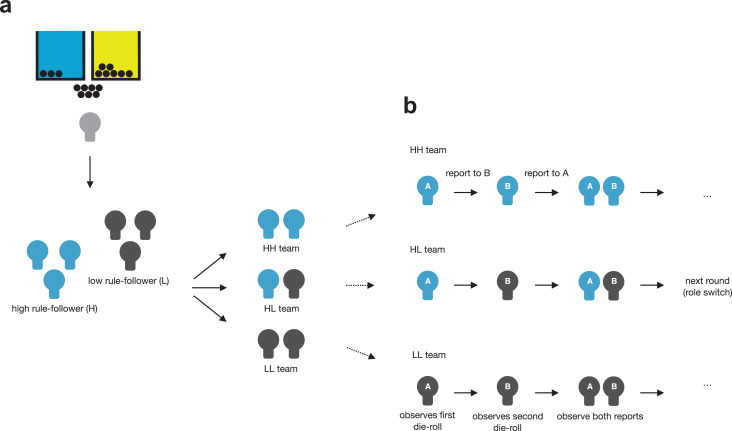Figure 2.
Experimental design. In the first part (a), participants were confronted with a costly rule that demanded to put each ball into the blue rather than the yellow bucket. Participants were categorized as high (H) or low (L) rule-followers based on the number of balls participants allocated according to the rule. In Experiment 2, they were then assigned to pairs of high rule-followers (HH teams), low rule-followers (LL teams), or mixed pairs of one high and one low rule-follower (HL teams). Participants were reinvited in these teams of two and played the dyadic die-rolling task (b). In this task, the first mover (A) rolls a die and reports the outcome to the second mover (B). The second mover then rolls an independent die and reports the outcome to A. If they both report to have thrown the same number (a “double”), they get paid according to the value of the double. After each round, the role (first mover/second mover) is switched.

